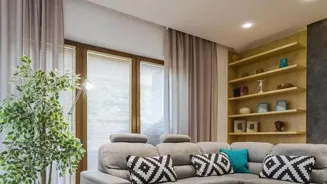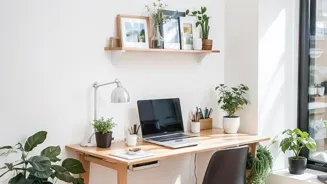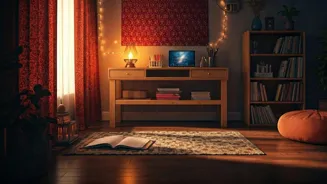Discover the art of Minimalism with 8 Home Decor Ideas for a clutter-free sanctuary! Embrace simplicity and serenity now!
In today's fast-paced world, many of us are looking for ways to simplify our lives
and create a more peaceful home environment. One popular approach is embracing minimalism – a design philosophy that emphasizes simplicity, functionality, and getting rid of unnecessary clutter.
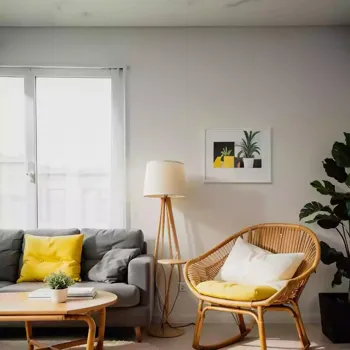
It's not about living in an empty, sterile space, but rather about carefully selecting items that bring joy and serve a purpose, thereby creating a home that feels calm, organized, and truly reflects your personal style.
Ditching the unnecessary can be liberating and give you back a lot of time and physical comforts.
Minimalism is gaining popularity in India as more folks are understanding the benefits of a clutter-free lifestyle.
A minimalist home can lower stress levels, improve focus, and even save money by encouraging mindful consumption. It's about making conscious choices about what you bring into your space and creating a more intentional way of living.
It’s also not just about the looks; a minimalist home is far easier to maintain and clean. Imagine a space where every item has its place and dust bunnies don't have a chance to gather!
Ready to declutter and transform your home into a serene sanctuary?
Here are eight simple yet effective home decor ideas to help you embrace minimalism and create a refreshing, clutter-free space. These ideas can be implemented in stages and do not required massive investments and change you completely.
Each of these ideas is practical and can be easily adapted to your home, no matter how big or small.
Declutter Ruthlessly: The KonMari Method & Beyond
Before you even think about decorating, the first step is to declutter! A great place to start is with the KonMari Method, popularized by Marie Kondo. This method encourages you to go through each item you own, category by category (clothes, books, papers, sentimental items, etc.
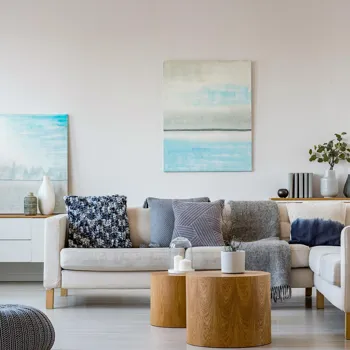
), and ask yourself, "Does this spark joy?" If the answer is no, thank the item for its service and let it go. Be honest with yourself about what you really need and use. Don't hold onto things "just in case" you might need them someday.
Consider donating gently used items to charity, selling them online, or giving them away to friends or family. Once you have decluttered using specific methods and categories it becomes easier to move on other spaces and items.
Don't just focus on the big stuff; pay attention to the little things too. Clear out drawers, cabinets, and shelves, getting rid of expired products, old paperwork, and anything else you no longer need. Once you've decluttered, commit to maintaining your clutter-free space.
Make it a habit to put things away immediately after using them and to regularly evaluate what you have and get rid of anything you no longer need. Remember, it won't be a one and done situation but a conscious effort to maintain.
Create what I use to call clutter jail.
A box or a corner where items are placed, that do not have a space to be placed. It gives you time to consider it before you actually donate it or trash it. It allows you to reassess your need and decide the relevance of the item in your life.
If it stays in the box or corner for too long, then its time to let it go.
Neutral Color Palette: The Foundation of Serenity
Choose a neutral color palette as the foundation of your minimalist design. Think whites, creams, grays, beiges, and other earthy tones. These colors create a sense of calm and tranquility and provide a versatile backdrop for your decor.

You can add pops of color with accessories like cushions, throws, and artwork, but keep the overall palette neutral to maintain a sense of spaciousness.
Neutral colours can really open up a space. For smaller homes the simple effect of well chosen colours can make a space feel larger than it is.
It allows the home to feel fresh and modern while also being practical. By letting the colour fade into the background, its easier to highlight details. As a result it gives the illusion of space, as the focus is not on the walls and floor but on the other items.
For example, an interesting green plant looks amazing against a white wall.
Don't be afraid to experiment with different textures within your neutral palette. Layering different shades and textures, such as linen, cotton, and wood, can add depth and visual interest to your space.
For example, a cream-colored linen sofa with a textured throw and wooden coffee table creates a cozy and inviting atmosphere.
Multi-Functional Furniture: Maximizing Space & Utility
Invest in furniture that serves multiple purposes. A sofa bed, for example, provides seating during the day and a guest bed at night. A coffee table with hidden storage can hold blankets, remotes, and other items, keeping them out of sight.
Ottomans with lift-up lids can serve as both seating and storage. Look for pieces that are well-designed, durable, and easy to clean.
Multi-functional furniture is especially useful in smaller homes.
By maximizing the use of each piece, you can minimize the amount of furniture you need and create a more spacious and functional living space. It allos for a simpler design because the features are doubled, this means that the room requires less to be fully habitable.
These items often come in smaller and easier to pack pieces which makes them far easier to move around.
Consider furniture that can be easily rearranged or reconfigured to suit your needs.
Modular sofas, nesting tables, and folding chairs are all great options for creating a flexible and adaptable living space. This allows you to change the dynamics of the room on the fly. You change quickly host a dinner party or create a home theater using the modular furniture.
Minimalist Wall Decor: Less is More
When it comes to wall decor, keep it simple and intentional. Choose a few pieces that you truly love and that complement your overall design aesthetic. A large piece of artwork can serve as a focal point in a room, while a gallery wall of carefully curated photographs can add a personal touch.
Instead of cluttering your walls with lots of small items, opt for a few larger pieces. This will create a more impactful and visually appealing look, while also minimizing visual clutter. Ensure that the item is something the entire family likes, not just the person who chose it.
This is especially important if the item is expensive and will be a part of the home for a number of years.
Consider using floating shelves to display your favorite books, plants, or decorative objects.
Floating shelves are a great alternative to traditional bookshelves and can help to create a more open and airy feel in your space. Be mindful of what you display on your shelves; less is more.
Smart Storage Solutions: Everything in its Place
Effective storage is essential for maintaining a clutter-free home. Invest in storage solutions that are both functional and aesthetically pleasing. Baskets, bins, and containers can be used to organize items in drawers, cabinets, and shelves. Use clear containers for easy visibility.
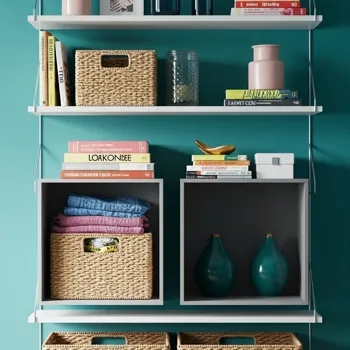
Label your storage containers so you know exactly what's inside. This will save you time and effort when you're looking for something. Choose storage solutions that complement your overall design aesthetic.
Woven baskets, wooden boxes, and metal bins can all add texture and visual interest to your space. Using the same style of products can also lead to a neat and clean look.
Don't forget about vertical storage!
Shelves, wall-mounted organizers, and hanging racks can help you make the most of your space and keep items off the floor. Use the back of doors to hang hooks for towels, robes, or bags. Get creative with your storage solutions and find ways to maximize every inch of your space.
Greenery & Plants: Bringing Nature Indoors
Add a touch of nature to your minimalist home with indoor plants. Plants not only purify the air but also add a sense of life and vibrancy to your space. Choose plants that are easy to care for and that thrive in your home's environment.
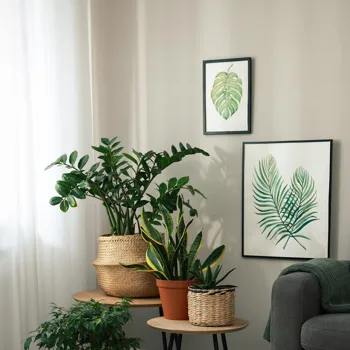
Potted plants, hanging plants, and succulents are all great options. Add a few plants in common living spaces to bring the feeling of calm to the home.
Use simple and elegant pots and planters that complement your minimalist design aesthetic.
Consider grouping plants together to create a more impactful display. Be mindful of the amount of sunlight your plants need and place them accordingly. Adding too many plants may defeat the purpose of minimalism but an ample number will give the feeling of life to your home.
Remember to water your plants regularly and to prune them as needed. A few well-cared-for plants can make a big difference in the overall look and feel of your home. Plants always give a welcoming presence to the home and are great at inviting guests.
Declutter Digital Space: Create a Digital Zen Zone
You have to also declutter the digital space to free up time that can be spent on other things. Organize your computer files, delete unnecessary apps from your phone and unsubscribe from emails and newsletters. This allows the home to feel decluttered and it can reduce stress.
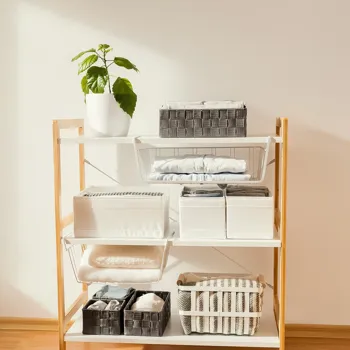
It's easy to feel a weight from too many messages, especially from social media.
Turn off phone notifications, especially the ones that are not as important, this will lead to more focus on life and less distraction. If possible, create a designated workspace separate from your resting space.
This will allow for better focus on work and help leave the work mentality behind when you have finished work for the day. Ensure that all paperwork is digitally scanned and the paperwork is neatly packed and stored into a box.
Have an inbox clear out once a week where spam emails and unnecessary emails are deleted for time. This allows for easier access of emails to do with work or important information.
Lighting is Key: Use Natural or Warm Lighting
Natural lighting is ideal to brighten a home and create a sense of minimalism. If natural lighting is inaccessible then consider buying warm lighting that will brighten the house. Replace lights that flicker to reduce distractions and ensure there is ample lighting in reading or working spaces.
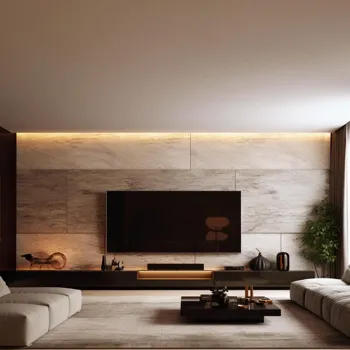
Add Lampshades to create a unique design and focus the eye on decorations when the house is minimalistic.
It is important to control lights to create different moods. Consider a dimmer to manipulate artificial lighting to create different moods as needed.
For example during movie time have it dimmed to allow the best cinema experience. During work time, have the lighting at an appropriate focus to prevent strain. This will allow you to fully take advantage of each activity.
Make sure lampshades and lighting products are of high quality, it makes a big difference in the look and feel throughout the home.
By embracing these eight home decor ideas, you can transform your space into a clutter-free sanctuary that promotes peace, simplicity, and well-being.
Remember that minimalism is a journey, not a destination. Be patient with yourself, and enjoy the process of creating a home that reflects your true values and brings you joy.
Creating a home must feel peaceful and you'll have plenty of time to build the house into a home, it does not happen straight away.
AI Generated Content. Glance/InMobi shall have no liability for the content


